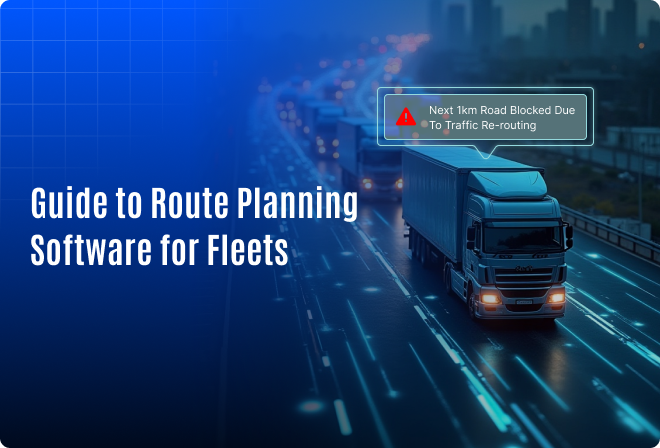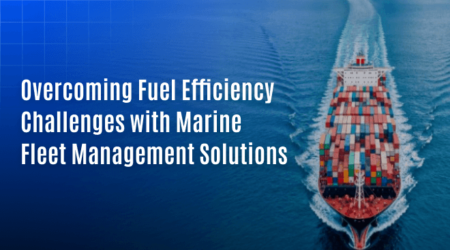A Comprehensive Guide to the Best Route Planning Software!

The logistics industry is moving faster than ever. Rising fuel prices, unpredictable traffic, and growing customer expectations have made route planning one of the most critical factors in operational success. A recent McKinsey study found that companies using advanced route optimization cut transportation costs by up to 15% and improved delivery times by 20%. These aren’t small gains; they directly impact profitability and customer loyalty.
For businesses with multiple vehicles or complex routes, the right route planning software is a competitive edge. This guide explores the latest innovations in route optimization. It shows how modern solutions improve fleet performance.They also help control costs and boost customer satisfaction.
The cornerstone of efficient logistics: understanding route planning
Before we explore route planning software, it’s important to understand what route planning really means. At its core, it is the process of finding the most efficient path for vehicles to travel from one point to another, or across multiple stops. This planning considers factors like traffic, delivery time windows, and vehicle load capacity. When done right, it improves productivity. It lowers operational costs. And it delivers a better experience for customers.
The evolution of route optimization
The evolution of route optimization is a fascinating journey that mirrors the rapid advancements in technology and the growing complexities of global logistics and transportation networks. Here’s a more detailed look at how route optimization has evolved over the years:
Early days: manual planning and simple routes
- Manual Route Planning: Initially, route planning was a manual process, often reliant on the local knowledge and experience of dispatchers and drivers. They would use physical maps and their understanding of traffic patterns to plan routes.
- Simple Algorithms: The earliest computerized systems used relatively simple algorithms based mostly on distance, often ignoring real-time variables like traffic, weather, or road conditions.
The rise of digital mapping and GPS
- Digital Maps: The introduction of digital mapping was a significant step forward. It allowed for easier visualization of routes and integration of basic geographical data.
- GPS Technology: The widespread adoption of GPS technology meant routes could be tracked and recorded in real-time, providing a wealth of data for analysis and improved route planning.
Integration of real-time data
- Traffic Updates: Real-time traffic data began to be integrated into route planning, allowing for more dynamic and adaptive routing.
- Weather and Road Conditions: Systems started considering weather forecasts and road condition reports, making routes safer and more reliable.
The advent of advanced algorithms and machine learning
- Complex Algorithms: Algorithms grew more sophisticated, considering a multitude of factors simultaneously to determine optimal routes. This includes vehicle type, cargo specifications, driver hours, and more.
- Machine Learning: Machine learning algorithms began to predict traffic patterns and suggest routes not just based on current conditions but also on learned data from historical trends.
The era of customization and user-friendly interfaces
- Customizable Parameters: Route optimization software became more flexible, allowing businesses to input a wide range of customizable parameters to suit their specific needs.
- User-Friendly Design: Therefore, as route optimization technology became more complex, interfaces grew simpler and more intuitive, making advanced planning accessible to more users.
The future: integration, sustainability, and AI
- Sustainability Focus: Businesses are aiming to cut carbon emissions and follow eco-friendly routes. Modern systems improve fuel efficiency and suggest paths with less environmental impact.
- AI and Predictive Analytics: Artificial intelligence and predictive analytics now shape route optimization. They analyze large data sets to predict the best routes with high accuracy.
- Integrated Systems: Route optimization links with tools like inventory and customer management. As a result, this ensures a more connected and efficient logistics process.
Pioneering advanced route optimization
Our fleet management software, Trakzee, is at the forefront of this technological evolution. It goes beyond reacting to current conditions by anticipating future challenges and planning ahead. The route optimization feature reflects this approach, providing tools that make logistics smoother, faster, and more efficient.
Seamless integration and real-time adaptation
Route optimization works smoothly with your existing operations. It pulls data from multiple sources to give a complete view of your fleet. It also adapts in real time to changing conditions like traffic updates or sudden route changes. This keeps your fleet on the most efficient path.
User-friendly interface and customizable options
Despite its advanced backend, Trakzee has a simple interface that makes route planning easy. It also offers customization to match your business needs, ensuring routes align with your goal
Trends in Route Optimization: The Road Ahead
- Sustainability First: Businesses are increasingly focusing on eco-friendly logistics. Modern route optimization tools reduce miles driven and fuel consumption, helping lower emissions and support greener operations.
- AI and Machine Learning: These technologies make route planning smarter and faster. They predict traffic patterns, suggest better routes, and make decisions with greater accuracy than manual methods.
- Customer Experience: Customers expect quick and reliable deliveries. Advanced route planning meets these demands by providing accurate delivery windows and live tracking updates.
Leveraging Route Planning Software for Optimal Results
- Regularly Update Data: Keep vehicle, route, and other key information current for the best route suggestions.
- Monitor Performance: Additionally, use analytics to track fleet performance and find improvement areas.
- Provide Training: Ensure your team knows how to use the software fully with ongoing training and support.
The tangible benefits of effective route planning
Implementing advanced route planning software isn’t just about keeping up with technology; it’s about realizing tangible benefits that directly impact your bottom line.
- Cost Reduction: By minimizing miles driven and time spent on the road, you significantly cut fuel costs and reduce vehicle wear and tear.
- Time Savings: Efficient routes mean deliveries are completed faster, allowing you to serve more customers or take on more jobs.
- Improved Customer Satisfaction: Reliable, timely deliveries and the ability to provide accurate ETAs enhance your reputation and customer satisfaction.
Navigating the future with confidence
As we look ahead, the only constant in the business world is change. By embracing advanced route planning solutions like Trakzee, you not only prepare for the future; you shape it. The path to success in logistics and fleet management is complex and ever-changing, but with the right tools and strategies, it’s a path that leads to significant rewards.
Conclusion
In conclusion, the future of the business depends on innovation, awareness of market trends, and the right technology to stay ahead. With advanced route optimization features, It enables the business to operate with maximum efficiency and deliver consistent results. It positions the fleet ahead of the competition, ensuring every route drives stronger performance and profitability. The future holds vast opportunities and the business is ready to navigate them with confidence.



